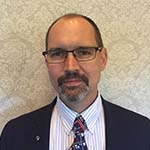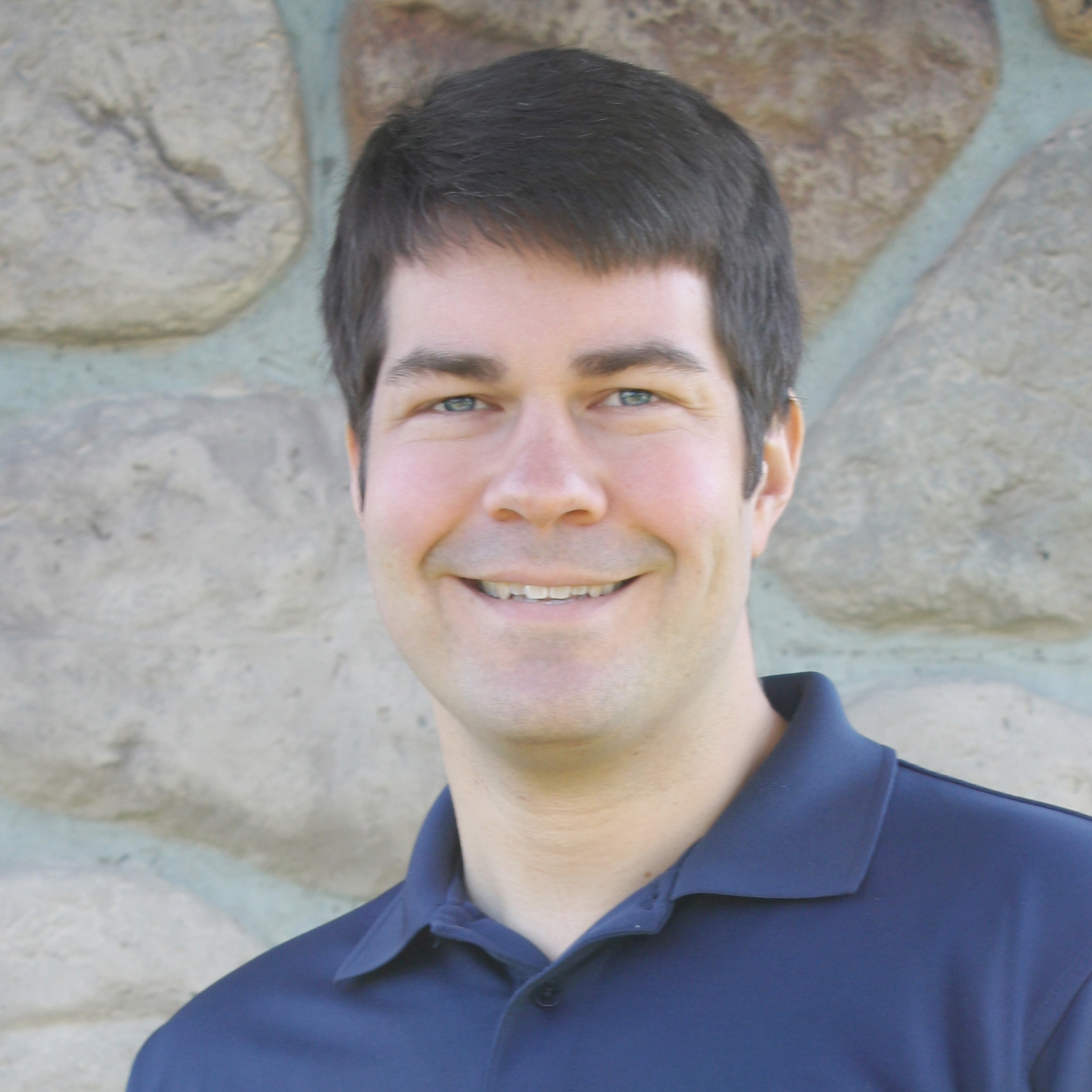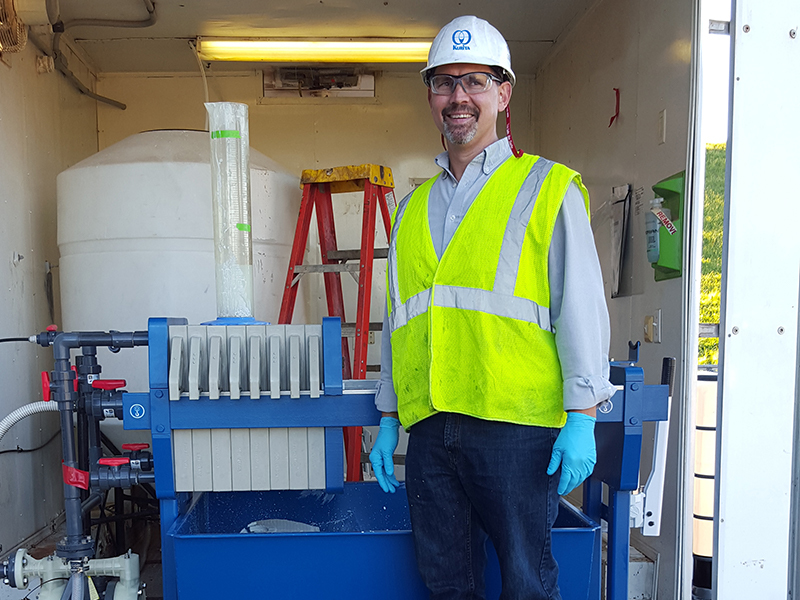Kurita America’s experience with cold lime softening (CLS) has culminated in the creation of SaltOUT, an innovative enhancement chemistry that precipitates hard-to-remove ions and trace metals into a stable solid waste. SaltOUT is a next-generation solution that will expand reuse and zero liquid discharge (ZLD) opportunities while meeting stringent discharge requirements and mitigating waste disposal risks.
Development of Kurita America’s SaltOUT concluded in the Spring of 2021 with the completion of a state-of-the-art wastewater treatment plant design for a precious metals mining application. This design combines several proprietary processes including equipment and specialty chemical programs to reliably meet discharge requirements for sulfate and sixteen (16) separate metals. SaltOUT was specifically formulated for sulfide ore mining operations and verified on coal-fired power plant scrubber water; however, it will benefit any industry with discharges high in sulfate and heavy metals.
This effort began in 2006 with Pacific Ethanol’s facility in Madera, California, the first ZLD application at a dry grind ethanol plant in the United States. Kurita America, formerly U.S. Water, reshaped the ethanol industry by implementing CLS to precipitate the high-strength cooling tower blowdown for reuse in the plant. Lime softening is a process by which calcium hydroxide (Ca(OH)2) is used to precipitate calcium, magnesium, and bicarbonate alkalinity, thus reducing the total dissolved solids (TDS) of the final effluent. The co-product of CLS is a pressed lime cake, the preferred solid disposal route of regulatory agencies. Kurita America designed, supplied, and commissioned another fourteen (14) similar plants over the next several years. These designs favor water reuse to improve sustainability and minimize regulatory liability.
The next phase in development was a commission to investigate treatment of coal scrubber pond and precious metals mining waste in the face of new regulation. A need for enhanced environmental treatment was apparent in the Environmental Protection Agency’s (EPA) Effluent Limitation Guidelines (ELGs) for coal power plants along with an increase in precious metals mining to support electric vehicle production. A pilot study was conducted to verify the SaltOUT process on existing waste streams within a power plant. The results were surprising: While studying the sulfate precipitation kinetics, we observed the efficient removal of toxic metals, such as mercury (Hg), selenium (Se), and boron (B), which were deposited in the inert lime cake waste product. The treated water easily met the federal effluent requirements with many metals removed below the detection point.
SaltOUT can be implemented in several ways depending on the specific wastewater and desired effluent quality. To stay up to date on the most stringent permitting trends, specific trace metals may require improved removal rates beyond the basic process; for instance, a mercury limit of three (3) parts per trillion (ppt) is common among renewed National Pollutant Discharge Elimination System (NPDES) permits. An adjunct unit operation can be added as a pretreatment step to improve precipitation of mercury (Hg) along with copper (Cu), lead (Pb), manganese (Mn), nickel (Ni), and zinc (Zn). This additional step allows for removal of trace metals to acceptable concentrations for any permit.
The most important aspect of SaltOUT is the stability of the filter cake regarding heavy metal leaching. Effluent discharge quality may be the immediate concern, but sludge and filter cake disposal are long-term issues that can be billion-dollar liabilities for large corporations. The accepted test method for evaluating a sludge cake is the Toxic Characterization Leachate Procedure (TCLP) that simulates acid rain’s effect on solid waste. All tested filter cake samples from the pilot passed TCLP because SaltOUT has a dual barrier to leaching.
The first barrier is the alkalinity of the lime that neutralizes acid upon exposure. The second barrier is the structure of the solid: Calcium and sulfate precipitate into a crystalline matrix (known as an ettringite) while coincidentally integrating cationic and anionic trace metals. This double benefit ensures a stable solid waste product for long-term, non-hazardous storage, which is the key to mitigating corporate disposal liability for many years.
SaltOUT is an excellent fit for plants that have issues with heavy metals discharge. Power, mining, chemical, or any industry that burns coal or crushes minerals can benefit to meet discharge requirements and mitigate waste disposal risks. This process may also enable water reuse where formerly not possible, allowing to recycle water back to the plant to offset source withdrawals.
Kurita America is ready to integrate SaltOUT into your process solution. After understanding your current operation and specific needs, we will work to determine process feasibility, establish preliminary budgetary costs, and calculate the potential return on investment (ROI). A bench-top study would follow with a final pilot study to confirm effluent quality and reagent requirements. The advantages of SaltOUT include reduced TDS beyond conventional precipitation methods, cost-effective solid waste disposal, and removal of trace-level pollutants to meet strict federal effluent requirements.
Ask us if SaltOUT is the right process for your challenging water application. Please contact Travis Hanson, P.E., with potential applications.
 About the author: Travis Hanson, P.E., is a business development manager at Kurita America, specializing in chemical process development in equipment and engineering. He has a chemical engineering degree from the University of Minnesota and focuses his efforts on water refuse and pollution prevention technology. He is an active member of the Society of Mining, Metallurgy, and Exploration (SME).
About the author: Travis Hanson, P.E., is a business development manager at Kurita America, specializing in chemical process development in equipment and engineering. He has a chemical engineering degree from the University of Minnesota and focuses his efforts on water refuse and pollution prevention technology. He is an active member of the Society of Mining, Metallurgy, and Exploration (SME).
 About the author: T.J. Stroebl is a technical marketing leader at Kurita America, specializing in equipment systems. After earning a chemical engineering degree from the University of Minnesota, he has spent his career with Kurita America focusing on process and equipment design, troubleshooting, and development relevant to water treatment systems. T.J. is an active member of the American Water Works Association (AWWA), currently serving as vice chair on the Manufacturers/Associates Council (MAC).
About the author: T.J. Stroebl is a technical marketing leader at Kurita America, specializing in equipment systems. After earning a chemical engineering degree from the University of Minnesota, he has spent his career with Kurita America focusing on process and equipment design, troubleshooting, and development relevant to water treatment systems. T.J. is an active member of the American Water Works Association (AWWA), currently serving as vice chair on the Manufacturers/Associates Council (MAC).

